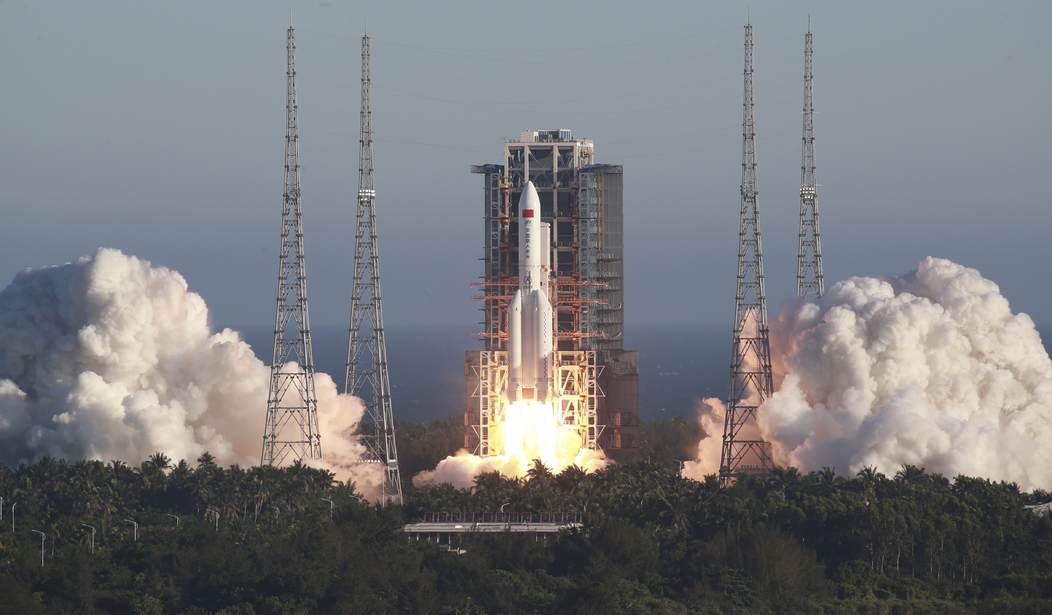You know I can't resist the Pleiades.
Volcanic éruption from Space station pic.twitter.com/1uflHAfbKm
— ana4ever (@ana4dream) November 19, 2025
A long time ago. But maybe again soon.
On This Day 1969 - Apollo 12 Lands on the Ocean of Storms
— Mike Constantine (@Moonpans) November 19, 2025
This great photo captured by Alan Bean shows commander Charles ‘Pete’ Conrad descending the LM ladder to become the 3rd man to walk on the Moon pic.twitter.com/tuIaza3fOu
This one is so wild I had to ask Grok about it.
- The image uncovers four spiral structures formed over 700 years from two Wolf-Rayet stars' interactions on a rare 190-year orbit, with a third supergiant star carving a funnel-shaped cavity, providing rare data on dust formation and future supernova explosions.
- Post garners over 1,400 likes and 26,000 views in hours, sparking replies likening it to a fetus or space lizard, underscoring JWST's role in blending scientific discovery with viral visual awe.
WAKE UP BABE, A NEW JWST IMAGE DROPPED!!! 🌌✨ pic.twitter.com/vzqSZGk7hk
— Jasmine 🌌🔭 (@astro_jaz) November 19, 2025
We've talked about Wolf-Rayet stars in the past. But that picture is after centuries. This is brand new.
We just saw the exact moment a star exploded for the first time ever.
— Massimo (@Rainmaker1973) November 19, 2025
Astronomers have achieved a rare feat: imaging the exact moment a massive star detonated—and the explosion was anything but spherical.
SN 2024ggi, a supernova located 22 million light-years away in the spiral… pic.twitter.com/yUWMG4lcqa
A new look at an eclipse.
This is what solar eclipse looks like from Space pic.twitter.com/K9pMobVnGM
— Curiosity (@MAstronomers) November 17, 2025
3I ATLAS continues to be spectacular.
That's more like it!
— Corey S. Powell (@coreyspowell) November 16, 2025
Marvelous new image of interstellar Comet 3I/ATLAS, taken by photographer Satoru Murata before dawn this morning, captures intricate structure in its tail(s). On the right you can also see galaxy NGC 4691. https://t.co/7rP3S4ysa5 pic.twitter.com/KrjhOSCgLc
This is an artistic rendering of the results of a new study trying to make sense of one of the biggest puzzles in astrophysics and cosmology. So far, it only narrowed the possibilities. More Grok.
- This X post by astrophysicist Erika summarizes a November 2025 Nature Communications study using galaxy redshift distortions and lensing to test dark matter's motion in gravitational wells, confirming it follows Euler's equations like ordinary matter under gravity alone.
- The research constrains any fifth force influencing dark matter to -21% to +7% of gravitational strength at 68% confidence, ruling out stronger deviations but not excluding subtle interactions, as visualized in the post's artistic rendering of cosmic inflows.
- Future LSST and DESI surveys may detect forces down to 2% sensitivity, advancing tests of dark matter's physics, while replies highlight ongoing debates on whether such gravitational inferences risk circularity given dark matter's primary detection via gravity.
A team of researchers have carried out one of the sharpest tests yet to see whether Dark matter behaves like the ordinary matter we know, or whether an extra “fifth force” might influence it.
— Erika (@ExploreCosmos_) November 17, 2025
By comparing how galaxies fall into cosmic gravity wells (regions where massive… pic.twitter.com/Pkx2IG7r8L
Okay, this is on Earth, but doesn't it look like something from science fiction?
Hawaii’s Kilauea volcano just unleashed a massive wing shaped eruption with lava fountains soaring 1,500+ feet high pic.twitter.com/BihDWOPkaq
— Surajit (@surajit_ghosh2) November 16, 2025
And I promised flips. Flips you shall have.
The "Dzhanibekov effect", seen in a rotating object where it will flip its axis by 180 degrees, is demonstrated in microgravity with our camera. pic.twitter.com/G45oNvb5Lg
— Don Pettit (@astro_Pettit) November 20, 2025
So that's another week of Sky Candy. As always, I love comments. Come back next week, and tell all your friends. And enemies. And strangers on the street.










